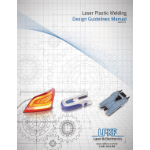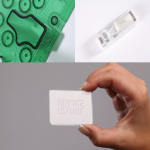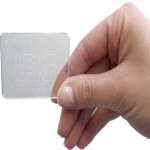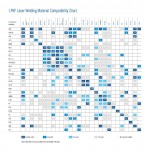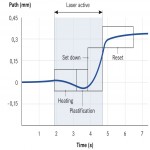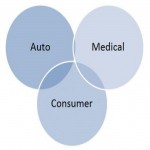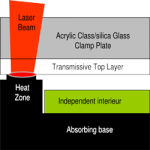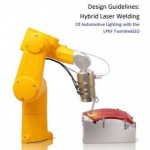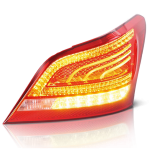This very popular document has just been updated to version 4.0, and is now available. The Laser Plastic Welding Design Guidelines is a powerful document for engineers designing applications for laser plastic welding. This improved document covers the main factors affecting a quality weld, material considerations, process types, and much more.
Blog
Bonding clear polymers WITHOUT additives!
Thanks to new fiber laser technology it is now possible to weld clear and translucent polymers without requiring any specialized additives. Traditional through-transmission laser welding requires additives, whether pigments or specialized additives designed specifically to absorb the near-IR radiation. This was limiting, however, as it made bonding completely clear polymers expensive and the color was never truly. Read the rest of this entry »
Webinar: “Transparent Laser Plastic Welding”
“Transparent Laser Plastic Welding – Bonding of clear polymers without additives”
A breakthrough in laser plastic welding technology has opened doors for bonding of transparent polymers. Precision, flexibility and cleanliness already set laser plastic welding apart from other polymer bonding methods, but now the ability to bond clear polymers without special absorbers has expanded the list of potential applications. Find out how this technology will play a big part in the diffusion of laser plastic welding, especially in the mammoth medical device industry.
Material Compatibility Chart
This chart displays the most common, weldable thermoplastics. Each sample of this study was done with the plastic materials in their natural state. Please take note of the color system which indicates weld quality.
For more information on plastics a compatibility please see the Laser Plastic Welding Design Guidelines document or the Design Guidelines webinar.
Quality Assurance for Laser Polymer Welding Processe
Quasi-simultaneous Laser Welding
Transmission laser welding of polymers is a well-established industrial joining method, its reliability makes it particularly suitable for applications where very high weld seam quality is specified. A number of quality assurance methods are available when using this technology to safeguard the specifications demand for quality. These quality assurance methods are suitable for implementing a zero-error strategy, under very economically attractive conditions. This three-part series of articles discusses the different approaches.
Black-to-Black Laser Transmission Welding
Laser plastic welding, also known as through transmission welding, is quite simple in its essence (see Basic Process Video). Laser radiation is shot through an upper transmissive plastic part and the energy is absorbed by the lower layer, creating heat at the interface and melting both parts.
However, the process does not always seem so intuitive. For instance when welding colored materials, specifically ones with opaque upper layers. Read the rest of this entry »
What Industries Is Laser Plastic Welding In?
Nearly two decades old, laser plastic welding is gradually gaining a foothold in the plastics joining universe. It started out as a niche welding method providing specialized welds for cutting edge applications that could not be joined by traditional methods. Today the technique is becoming more widely used.
Plummeting costs of laser sources and a higher demand for the systems themselves are driving the cost to adopt laser welding down. In fact, the cost of a standard laser welding system is now on par with traditional methods such as ultrasonic and hot plate welding.
Clamp Tools and Fixturing in Laser Plastic Welding
Solid knowledge and execution of clamping and fixturing can have a profound effect on the laser welding process. To ensure quality welds during laser plastic welding, intimate contact between the two parts is paramount. Close contact will allow for adequate heat to be transferred, through heat conduction, from the absorbing lower layer to the transmissive upper layer.
Design Guidelines: Hybrid Laser Welding of Automotive Lighting
This design guide is an elaboration on the original LPKF Design Guidelines for Laser Plastic Welding. You will find this document has a specific focus on automotive exterior lighting. All of the considerations have been adapted to this topic and other details have been added.
The purpose of this Automotive Lighting design guide is to help engineers understand the process and the type of considerations required to implement laser hybrid welding in auto lamp assemblies.
Laser hybrid welding of automotive lighting is a promising technology offering many advantages over traditional welding methods (hot-plate, vibration, ultrasonic, etc.) including: simple joint designs, the ability to handle large and complex shapes and the elimination of the post-weld annealing process.
Automotive Lamp Welding with Hybrid Laser Welding Video
Laser plastic welding is an effective means for assembling automotive exterior lighting. Replacing other welding methods, such as vibration, hot-plate and ultrasonic, laser hybrid welding brings to the table a variety of advantages and is opening new doors for design innovation.
Tune in to this quick video interview to hear LPKF Sales Manager, Dax Hamilton, as he explains the ins-and-outs of laser hybrid welding of automotive lamps.
